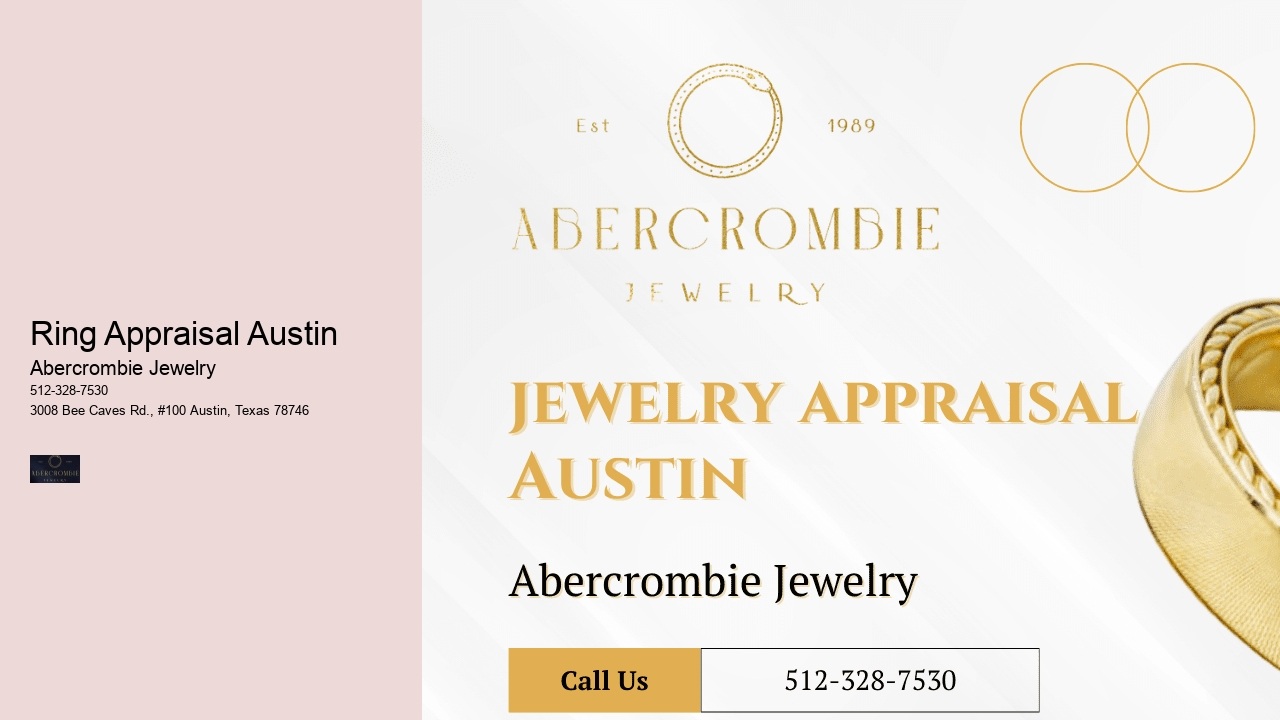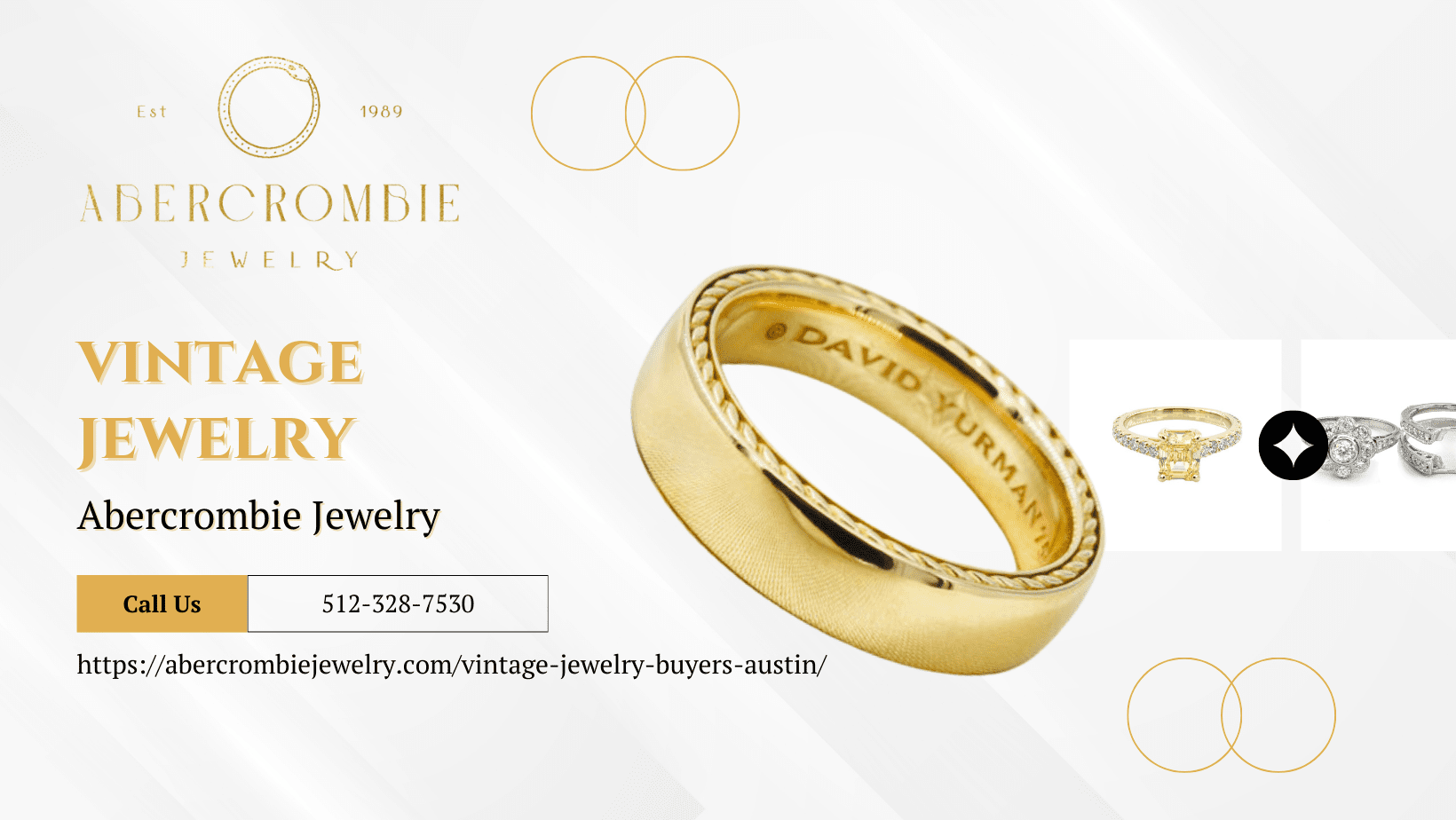

Jewelry Appraisal Services - Abercrombie Jewelry, Austin, TX
Abercrombie Jewelry in Austin, TX, is your trusted source for expert jewelry appraisal services. With more than 30 years of experience, our certified gemologists provide detailed evaluations tailored to your needs, whether for insurance purposes, resale, or estate planning. We specialize in appraising fine jewelry, vintage pieces, and luxury watches with accuracy and professionalism.
Why Appraise Your Jewelry?
A jewelry appraisal ensures you understand the true value of your pieces. Reasons include:
Insurance: Protect your jewelry with accurate coverage for loss or damage.
Resale or Trade: Determine fair market value for selling or trading items.
Estate Planning: Facilitate equitable distribution or legal compliance.
Authenticity: Verify the quality and value of your cherished items.
Appraisal Categories
Diamonds and gemstones
Antique and estate jewelry
Designer brands like Tiffany & Co., Cartier, and David Yurman
Luxury watches from Rolex, Patek Philippe, and others
Precious metals, including gold and platinum
Our Process
Expert Evaluation: Thorough examination of materials, gemstones, and craftsmanship.
Market-Based Valuation: Accurate pricing aligned with the latest trends.
Detailed Reports: Clear documentation with photos and descriptions.
Customer Support: Transparent communication and guidance throughout the process.
Why Abercrombie Jewelry?
Decades of Expertise: Trusted by Austin residents since 1989.
Family-Owned Integrity: Personalized service with a focus on trust and accuracy.
Commitment to Quality: Delivering professional results for all appraisal needs.
Located at 3008 Bee Caves Rd #100, Austin, TX, Abercrombie Jewelry is here to meet your appraisal needs. Call (512) 328-7530 or visit abercrombiejewelry.com to book your appointment today.
The Four Cs of Diamond Valuation Understanding the value of a diamond during an appraisal hinges largely on the globally accepted standards known as the "Four Cs": Carat weight, Clarity, Color, and Cut. The carat weight measures the mass of the diamond; one carat is equivalent to 200 milligrams. Larger diamonds are rarer and thus more valuable. Clarity refers to the absence of inclusions and blemishes; a flawless diamond with no internal or external imperfections is exceedingly rare and highly prized. The color grade actually assesses the lack of color; a perfect diamond has no hue and higher value. Lastly, the cut does not just mean shape but rather how well a diamond has been cut and faceted, affecting its symmetry, brightness, fire, and overall sparkle.
Certification and Fluorescence An often-overlooked factor that impacts a diamond's value is its certification from reputable institutions such as the Gemological Institute of America (GIA) or the American Gem Society (AGS). These certifications guarantee that a diamond’s attributes have been professionally assessed. Another aspect considered during appraisal is fluorescence – some diamonds emit a soft glow under ultraviolet light due to trace amounts of boron within their structure. While mild fluorescence can improve appearance by making slight coloration less noticeable, stronger fluorescence can negatively affect value due to potential haziness.
Market Factors Beyond intrinsic qualities, market factors play an essential role in determining a diamond’s worth at appraisal time. Supply and demand fluctuations can dramatically alter pricing; for instance, if there’s an influx of high-quality diamonds in the market or if economic downturns dampen demand. Moreover, trends also dictate desirability; certain cuts or colors may become fashionable, thereby increasing their market value temporarily.
Historical Provenance and Rarity Rarely, unique history behind specific stones can enhance their appeal exponentially — famous diamonds like The Hope Diamond carry stories that add to their allure beyond measureable qualities. Additionally, extremely rare characteristics such as natural fancy colors—pinks, blues, greens—and distinctive cuts might catapult an otherwise average stone into an exceptional price bracket due to collector interest or sheer rarity.
In conclusion, while the fundamental Four Cs provide a strong framework for understanding diamond valuation during appraisal processes, additional factors like certification authenticity, market dynamics along with historical provenance can significantly influence final assessments of worth for these precious gems.
| Entity | Definition |
|---|---|
| Diamond Appraisal Near Me | Local services for evaluating diamonds to determine their current market value based on quality and size. |
| Diamond Jewelry Appraisal | Professional service to assess the value of diamond-encrusted jewelry, factoring in diamond grade and setting. |
| Gold Jewelry Appraisal | Appraisal services for determining the value of gold jewelry by considering purity, weight, and market conditions. |
| Antique Jewelry Appraisal | Expert evaluation of antique jewelry, considering its historical value, rarity, and craftsmanship. |
| Estate Jewelry Appraisal | Appraisal for estate jewelry, determining value based on historical significance, material, and age. |
When considering a jewelry appraisal, it’s crucial to inquire about the appraiser's qualifications. Ask about their education, training, and any professional certifications they hold. This information will help you gauge their expertise and ensure they are well-equipped to evaluate your precious items accurately.
Before proceeding with the appraisal process, understand why you need the appraisal. Different types of appraisals serve various purposes such as insurance coverage, estate settlements, or resale values. Discussing this with your appraiser will help align their evaluation with your specific needs.
Gain insight into how the appraiser conducts evaluations by asking about their process. Inquire whether they use standardized grading systems for diamonds (like GIA or AGS) and what tools or technologies they employ to examine and value pieces accurately.
To comprehend how your jewelry’s value is determined, ask which attributes are considered during an appraisal. Understanding how factors like gemstone quality, metal type, design intricacy, brand name, historical significance, and current market trends influence value can give you a clearer picture of your item's worth.
It's important to know upfront how long an appraisal will take and what it will cost. Inquiring about turnaround times helps manage expectations while understanding fee structures—whether flat rates or percentage-based costs—helps prevent any surprises when it comes time to pay for services rendered.
Your jewelry may have both financial and emotional value; thus knowing how it will be handled during appraisal is essential. Ask if evaluations are done in front of you or if items are sent away for assessment. Also inquire about security measures in place to safeguard your treasures while in possession of the appraiser.
Finally, clarify what kind of documentation you’ll receive once the appraisal is complete—the report should be detailed with descriptions and photographs for insurance purposes. Additionally, ask if they provide follow-up services such as future re-evaluations since market values can change over time.

Look for certifications from GIA, ASA, or NAJA, along with years of experience and positive reviews.
Factors include gemstone quality, metal type, craftsmanship, brand, rarity, age, and market demand.
Verify their certifications, check reviews, and confirm their membership with professional appraisal organizations.
Appraisals ensure you are paying a fair price by verifying the quality and authenticity of the ring.
Bring any certificates, previous appraisals, and proof of purchase to provide complete information.
They include details about the gemstone's 4Cs, metal type, weight, and an estimated market value.